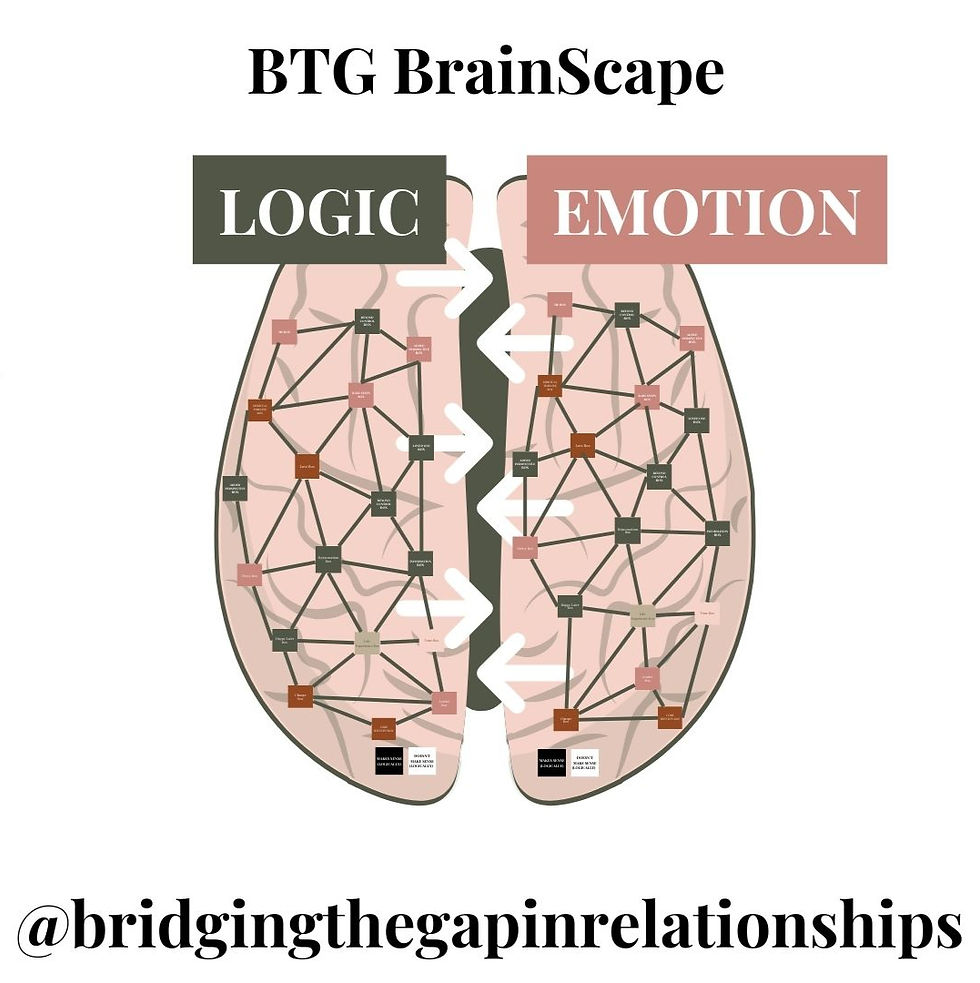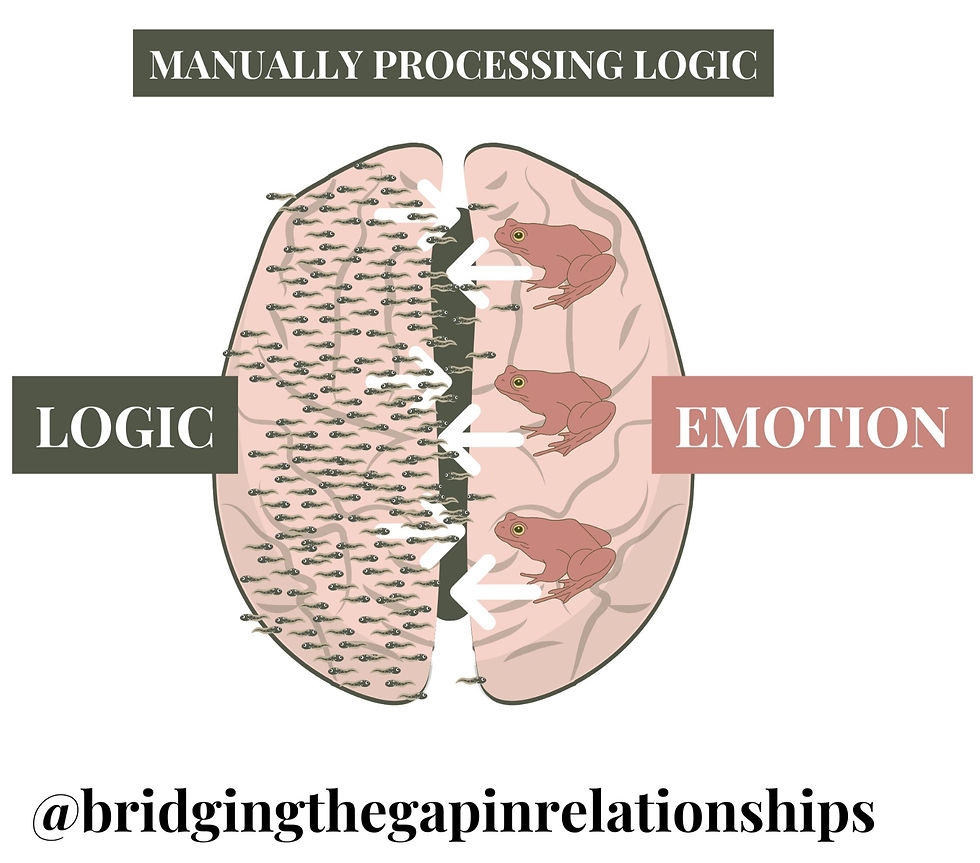Tadpoles and Frogs: How BTG Helps Your Brain Process Information
- Bridging the Gap

- Aug 18, 2024
- 3 min read

Our brains are constantly taking in a lot of information and stimuli. For simplicity purposes, BTG breaks this up into two main categories, logic and emotion. Ideally, our brains subconsciously and automatically sort through all this information, so we can focus on what’s important. Only the most important and relevant information/stimuli should survive all our brain filters. These are then given to the conscious mind to work with. We liken this processing process to the lifecycle of a frog, thousands of tadpoles start out, but only a few make it to the frog stage. This is like your brain automatically processing for you. We are supposed to communicate in “Frogs” to each other. But for some people, especially those with neurodiverse brains, this process isn’t automatic. Instead, they have to manually work through unfiltered and unprocessed “tadpoles,” which can be overwhelming. Often this means that when we communicate, we’re communicating with “tadpoles” and that can jar the other person, especially if they are automatic and have “frogs”.
🧠 Tadpoles and Frogs: What Do They Mean?
Tadpoles are unprocessed bits of information or emotions that your brain hasn’t sorted out yet. They can be confusing and overwhelming because they come at you all at once.
Frogs are the organized, filtered, processed thoughts and feelings that your subconscious brain has sorted out, making them easier to handle. To be a “frog” this stimuli would need to breed peace and calm under any circumstance.
Where and how your brain processes these tadpoles—whether manually or automatically—creates your processing style, which is a key part of your brain type.


Manual vs. Automatic Processing:
Manual Processing: If your brain doesn’t automatically sort things out, you’re left manually processing all those tadpoles, whether they’re logical or emotional. This can be exhausting and make it hard to focus on anything else. (This leaves you with an overwhelmed brain)
Automatic Processing: When your brain is working automatically, it can quickly sort through tadpoles, turning them into frogs without much conscious effort. This makes it easier to focus on other tasks.
How BTG Helps:
Reconnecting Your Boxes: BTG (Bridging the Gap) helps people who manually process information by teaching them how to reconnect their brain’s “boxes.” These boxes are neural networks that are supposed to filter, sort, and process information for you automatically. When they’re disconnected, you’re left to deal with a flood of unprocessed emotional or logical tadpoles.
Dealing with Less Tadpoles: By reconnecting these boxes, BTG helps reduce the number of tadpoles you have to manually process. This means your brain can start handling more of the processing automatically, leading to less overwhelm and more clarity.

Why This Matters:
Improved Processing: Reconnecting your brain’s boxes helps you manage your emotions and thoughts more effectively. Instead of being overwhelmed by a flood of tadpoles, you can let your brain sort them out in the background, giving you more mental space to focus on what’s important.
Better Relationships: When you’re dealing with fewer emotional tadpoles, it’s easier to communicate and connect with others. You’ll be less likely to feel overwhelmed or misunderstood, leading to healthier, more supportive relationships.
The Big Picture:
BTG helps people move from manually processing all those tadpoles to automatically handling them, by showing them how to reconnect the brain’s processing boxes. This leads to less overwhelm, clearer thinking, and better emotional balance.
By understanding how BTG can help you reconnect your boxes and reduce the number of tadpoles you have to manually process, you can experience more mental clarity and emotional well-being. 🐸✨





Comments